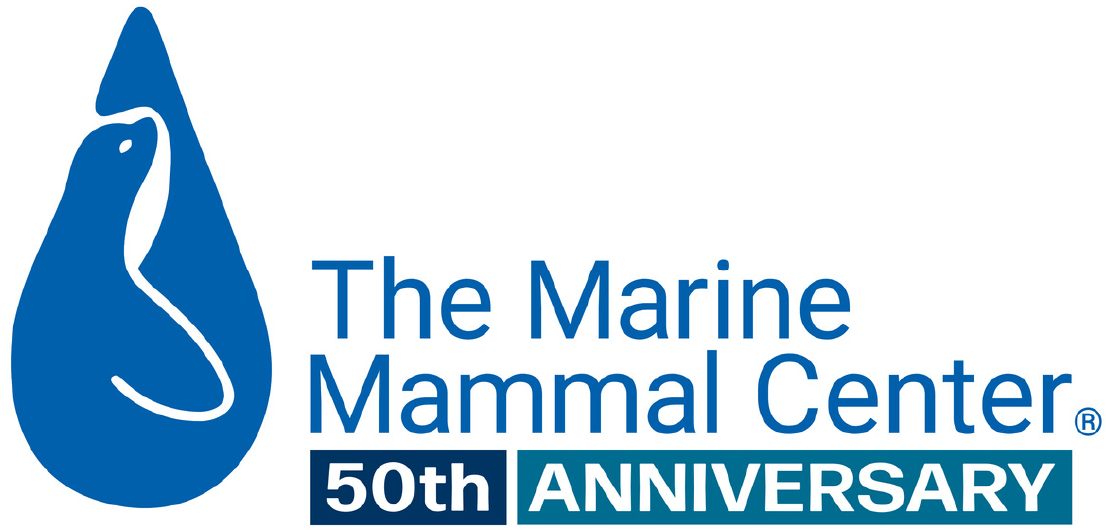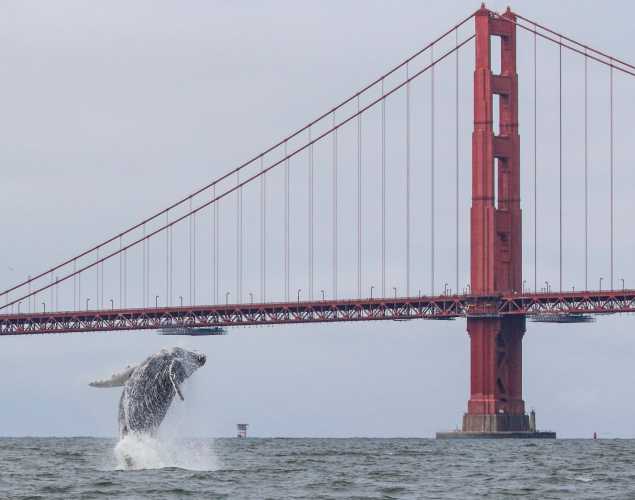
23 Amazing Conservation Efforts: Celebrating a Milestone for the Endangered Species Act
- Species conservation
This December marks the 50th anniversary of the U.S. Endangered Species Act, a law that works to safeguard animals and plants in danger of being lost and preserve the ecosystems where they live for future generations.
Under this law, a species may be listed as either endangered or threatened. What does this mean? Endangered species are considered at risk of extinction and threatened species are likely to become endangered within the foreseeable future. When a species is listed under the Endangered Species Act, critical habitat protections are authorized, and a species recovery plan is developed and put into action. Since this crucial law was passed in 1973, the Endangered Species Act has paved the way for countless conservation success stories, including saving 99 percent of its listed species from extinction.
As the world’s largest marine mammal hospital, The Marine Mammal Center works extensively with threatened and endangered marine mammals and is dedicated to protecting species through critical conservation initiatives. In fact, we are the only organization permitted by NOAA to rehabilitate endangered Hawaiian monk seals and one of few permitted to rehabilitate threatened Guadalupe fur seals and southern sea otters.
To celebrate this incredible 50-year milestone in 2023, we’ve created a list of 23 of our favorite wins for threatened and endangered marine mammals—life-saving conservation efforts that have been made possible thanks to compassionate people like you. You can feel proud knowing these wins are just the beginning as we continue building on the success of the Endangered Species Act by providing expert animal care, conducting vital scientific research, training leaders in the field and more.
The greatest threats to marine mammals are caused by people, but we can also be their greatest champions.
Sign up for email from The Marine Mammal Center to stay updated on how you can be an advocate and champion for marine mammals and ocean health.
23 Wins for Threatened and Endangered Marine Mammals
- As part of our work to save the endangered Hawaiian monk seal, The Marine Mammal Center opened Ke Kai Ola, a state-of-the-art hospital and visitor center on Hawai‘i Island.
- Nine of the 14 populations of humpback whales were successfully removed from the endangered species list after decades of conservation efforts. Among the populations still listed under the Endangered Species Act, the Center’s researchers are actively monitoring the health of the threatened population found along the California coast and taking action to protect them.
- The Marine Mammal Center serves as a critical training ground for students and professionals from around the world in the field of marine mammal health, medicine and conservation. Our learning experiences enable participants to gain unique crucial medical skills and the opportunity to contribute to their career growth, multiplying our impact to address global ocean threats and save endangered species.
- Southern sea otters were hunted to the brink of extinction, but the population has grown and is now listed as a threatened species. As part of our efforts to help this species recover, our research focuses on understanding diseases that affect sea otters and developing treatments, including domoic acid toxicity and toxoplasmosis.
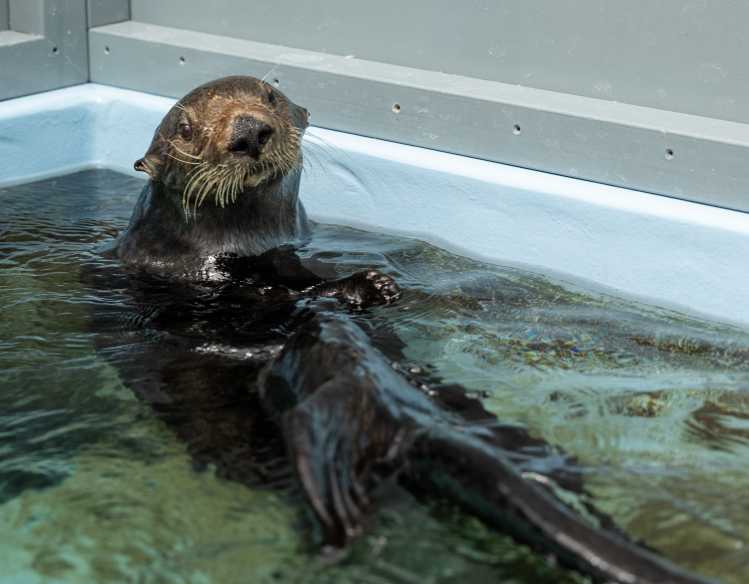
- The endangered Hawaiian monk seal population surpassed 1,500 individuals for the first time in more than 20 years. Of the 1,500 monk seals estimated to be in the wild, nearly 30 percent are alive today directly due to conservation efforts led by NOAA and partners like the Center.
- Researchers began attaching satellite tags to marine mammals from threatened and endangered species, including Guadalupe fur seals and Hawaiian monk seals, in order to track their movements in the wild, which allows our experts to learn more about how to better protect these species.
- The Marine Mammal Center began our Hawaiian monk seal outreach and education programs on Maui in 2022, expanding our efforts to protect endangered species.
- The Center is a leading first responder to cetaceans in distress, including threatened and endangered populations. With the expansion of our large whale entanglement response efforts, we’re now creating the capacity and infrastructure to collaboratively advance whale entanglement response on the West Coast of the United States.
- In partnership with the Benioff Ocean Science Laboratory, we deployed Whale Safe, an AI-enabled system that will help prevent ship collisions with endangered whales, to the San Francisco Bay Area Region.
- The Guadalupe fur seal population is slowly recovering from the brink of extinction and is now classified as a threatened species. In addition to rehabilitating this species at our Sausalito hospital, our experts work closely with ecologists and biologists in Mexico to conduct population counts and health assessments.
- The northern elephant seal is among the most impressive conservation success stories as a recovered endangered species. Once thought to be extinct, the population rebounded up to an estimated 150,000 individuals thanks to key protections, and it continues to grow every year.
- Since 2014, the Center has rehabilitated and released 45 Hawaiian monk seals like ‘Eleu. After separating from her mother too soon, ‘Eleu had nearly zero chance of survival. She was rescued and brought to Ke Kai Ola, our hospital dedicated to saving this species, and was released back to Northwestern Hawaiian Islands after three months of expert care.
You can help save Hawaiian monk seals from extinction
when you adopt ‘Eleu today!

- Once on the verge of extinction, the eastern North Pacific gray whale population rebounded and was delisted under the Endangered Species Act. Amidst the species' more recent decline, the Center’s researchers are actively monitoring the population’s health and performing necropsies on dead whales that wash ashore in order to identify and respond to rapidly changing environmental trends.
- For the first time, researchers have been able to confirm that two of our former Hawaiian monk seal patients are new moms—a powerful example of the impact of conservation efforts for this endangered species.
- The Center retrofitted two patient pens to safely house and rehabilitate southern sea otters and customized a specialized housing area for our most vulnerable sea otter patients, allowing our experts to provide more hands-on care as we work to help this threatened species recover.
- The first sea otter to rehabilitate in the Center’s specialized housing area for vulnerable otters, Spinny, healed from a severe shark bite wound and was successfully released.
You can adopt Spinny today
to help the next sea otter in need!

- Threatened populations of humpback whales began entering San Francisco Bay in significant numbers and have returned each year to feed and rest—hopeful news for a healthier ecosystem.
- The Center’s researchers are compiling the first-ever humpback whale, gray whale, harbor porpoise and bottlenose dolphin photo-identification catalogs for the San Francisco Bay in order to identify known individuals and track their movements to reduce ship strikes.
- As part of the Oiled Wildlife Care Network, the Center acts as the primary response facility for oiled pinnipeds and can house up to 10 sea otters during a large spill.
- As one of the few organizations permitted by NOAA to rehabilitate threatened Guadalupe fur seals, the Center is saving the lives of entangled animals like Snaggle. After this fur seal was spotted with netting wrapped tightly around his head and neck, our experts freed him from the entrapment and provided the care he needed to be released.
You can help conservation efforts
when you adopt Snaggle today!
- In 1979, the Center published our first scientific paper. Since then, our research scientists have been primary or contributing authors on hundreds of peer-reviewed research papers and textbook chapters with the goal of understanding the lives and deaths of marine mammals to improve conservation outcomes.
- Once considered threatened, the Eastern population of Steller sea lions successfully met recovery criteria and was removed from the endangered species list. Recent population surveys suggest this population is growing steadily each year. The Western population is still endangered and protected under the Endangered Species Act.
- The Center performed the first CT scan, with partners like NOAA, on a wild Hawaiian monk seal. The CT scan allowed experts to resolve the seal’s complex diagnosis and begin a treatment plan that led to her recovery. RH38 was monitored in the wild, and four years later, she was rescued again due to other health concerns. She received expert care and was successfully released back to her Kauaʻi home—a conservation win for protecting endangered species.

Want to hear even more conservation success stories as you celebrate the Endangered Species Act? Watch this Q&A event featuring The Marine Mammal Center’s experts. Plus, explore our online learning resources for a deep dive into species conservation.
Header image: Photo by Pilar Rodriguez © The Marine Mammal Center
Yes, I want to save a life!
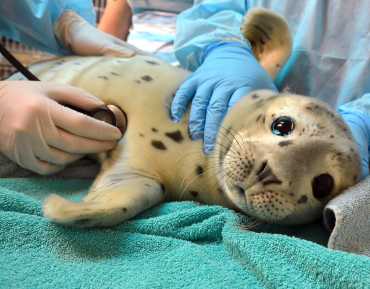
Yes, I want to save a life!
You’ll be giving sick and injured animals the best possible care at the Center’s state-of-the-art hospital. With your gift today, you are giving a patient a second chance at life in the wild.
See Our Latest News
{"image":"\/Animals\/Patients\/Hawaiian monk seals\/2025\/cropped-images\/d-ru28release-exam-at-ke-kai-ola111025photo-by-giancarlo-rulli-c-the-marine-mammal-center-noaa-permit-24359-0-0-1270-992-1764620886.jpg","alt":"","title":"Bird Flu Vaccine Trial Offers Hope for Protecting Hawaiian Monk Seals","link_url":"https:\/\/www.marinemammalcenter.org\/news\/bird-flu-vaccine-trial-may-offer-hope-for-protecting-hawaiian-monk-seals","label":"News Update","date":"2025-12-01 08:13:00"}
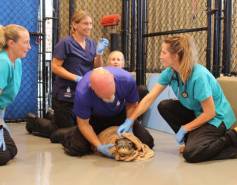
Bird Flu Vaccine Trial Offers Hope for Protecting Hawaiian Monk Seals
December 1, 2025
Read More{"image":"\/Animals\/Patients\/Hawaiian monk seals\/2021\/hms-pp08-by-sheila-latta-c-the-marine-mammal-center-noaa-permit-18786.jpg","alt":"Hawaiian monk seal","title":"The New York Times: Inside the Bird-Flu Vaccine Trial for Monk Seals","link_url":"https:\/\/www.marinemammalcenter.org\/news\/the-new-york-times-inside-the-bird-flu-vaccine-trial-for-monk-seals","label":"In the News","date":"2025-12-01 01:00:00"}

The New York Times: Inside the Bird-Flu Vaccine Trial for Monk Seals
December 1, 2025
Read More{"image":"\/Animals\/Wild\/Sea otter\/so-wild-morro-bayphoto-c-brian-simuro-20.jpeg","alt":"Sea otter and pup","title":"Watch a Sea Otter Pup Reunite With Its Mother","link_url":"https:\/\/www.marinemammalcenter.org\/news\/watch-sea-otter-pup-reunite-with-its-mother","label":"News Update","date":"2025-11-14 10:35:41"}

{"image":"\/Animals\/Wild\/Sea otter\/sea-otter-photo-c-brian-simuro.jpeg","alt":"Sea otter","title":"AP News: Baby sea otter is reunited with mother in central California after dramatic rescue","link_url":"https:\/\/www.marinemammalcenter.org\/news\/ap-news-baby-sea-otter-is-reunited-with-mother-in-central-california-after-dramatic-rescue","label":"In the News","date":"2025-11-14 09:46:34"}

AP News: Baby sea otter is reunited with mother in central California after dramatic rescue
November 14, 2025
Read More